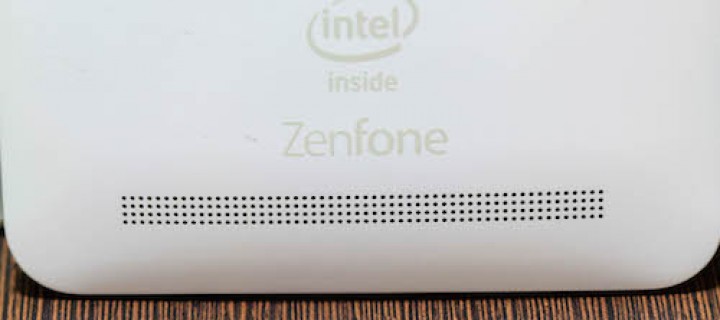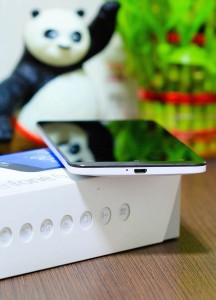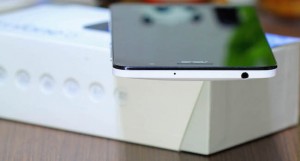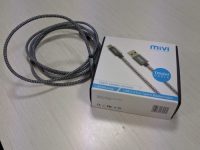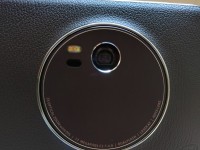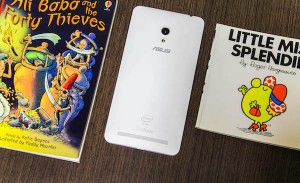
Asus has entered the Indian market with the ZenFone series of smartphones aimed at different price segments. The phones are selling exclusively on Flipkart and Asus has got the pricing spot on. All the ZenFones share the same design language; their hardware and software are quite similar.
The retail box design has been the same for the series and we like it. You have the charger with a detachable data cable, headset, some documentation and the handset. The build quality of the charger and headset is worth mentioning. The two pin charger is rated at 5.2v and 1.35Amps, and this charges the phone quickly. The earphones are in-ear type with interchangeable silicone tips that come in 3 sizes. They sound fair and provide decent isolation from the surrounding noise.
Coming to the handset, The ZenFone 6 is Huge! As the name suggests, it sports a 6 inch IPS display and it makes other phones look puny. The build quality of the phone is top notch. It looks and feels premium. The display has a resolution of 1280×720 pixels and the big screen size drops the pixel density to 245PPI. Thanks to the IPS display, the viewing angles are good, but the huge screen can be reflective in direct sunlight. Asus still offers capacitive buttons instead of on-screen ones that most manufacturers have now switched over to. Sadly the capacitive buttons are not illuminated and searching for them in the dark is a hit or miss.

We still don’t find a 6 inch phablet comfortable enough to use with one hand, but thankfully Asus has got the button placement bang on. The power button is easy to hit but it takes *a little* effort to reach the volume buttons. Also, the Zen UI has a one-handed operation mode that makes the phone really convenient to use. There are three options that shrink the UI down to either 4.3, 4.5 or 4.7-inches.
The ZenFone 6 is powered by an Intel Atom chip which is a 1.6Ghz Dual Core processor and has 2GB of RAM. It runs on a customized Zen UI on top of Android 4.3 Jelly Bean. The OS is old, but Asus has promised an update to Android 4.4 Kitkat, we just don’t know when(The ZenFone 4 has already got its update). The UI design looks clean and makes the user experience more engaging.
There are fixed shortcuts present on the lock screen. The preset ones are for the camera, phone and messaging. Swiping from these icons will launch the respective app — like swiping the phone icon takes you directly to the dialer.
The notification bar has been customized to give more control to the user. Swiping down from the right half of the screen will display toggle shortcuts and doing the same from the left will display notifications. There are options available to customize the toggles in the notification area.
Easy mode is present on the phone; something quite similar to what Samsung provides in some of their handsets. As the name goes, this mode dumbs down the whole interface to make it less complicated to use. The apps are arranged in an alphabetical list. This is a boon for someone who’s used to feature phones. Also, in this mode the icons are big and easy to hit, thereby making it convenient for the elderly. Tiny details like these, improve the overall user experience.
The phone also has audio modes which can be set using the Audio wizard app. This lets the user customize the audio based on the situation. The options available are Music, Movies and Power saver mode. A neat little app named mirror is also present which switches on the front-facing camera when launched.
The ‘What’s Next’ app does stuff quite similar to Google Now but uses natural language to convey information better. Also, this info is directly available on the lock screen, something that Google Now does not do yet.
The rear camera is a 13 megapixel unit with flash. The camera app has modes which help the user to get the best possible setup before clicking a snap. These modes are easy to select and look a lot like the ones on Samsung phones. The settings are easily accessible and there are a wide range of options to choose from. There’s an anti-shake enhancement feature which helps you in taking blur-free pictures. A tutorial present in the settings helps you make the best use of the camera onboard. Turbo shot mode gets the best picture by shooting multiple images and you can select the ones you want to keep at the end. The camera takes pretty good snaps. We were particularly happy with the macro shots, and thanks to the high resolution, using digital zoom doesn’t pixelate the image much.
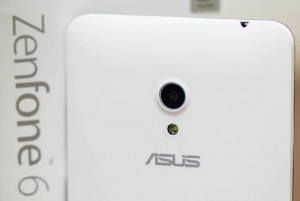
We played some games like Temple Run and Car X Drifting on the phone for a while and found that the phone took some time in loading, but it was smooth sailing after that. The device performs flawlessly and we faced no lags during gameplay. The graphics rendered well without any noticeable frame drops, we’d say the phone is good for casual gamers.
In closing, right now, the ASUS Zenfone 6 seemingly is the only decent phablet you can buy under Rs. 20,000. The phone is exclusive to the Flipkart and is priced at 16,999, which is killer pricing. What do you think? Now that the iPhone 6 Plus is here, there’s less chance that you’ll be mocked for using a big screen phone. Are you willing to upgrade to a phablet?

